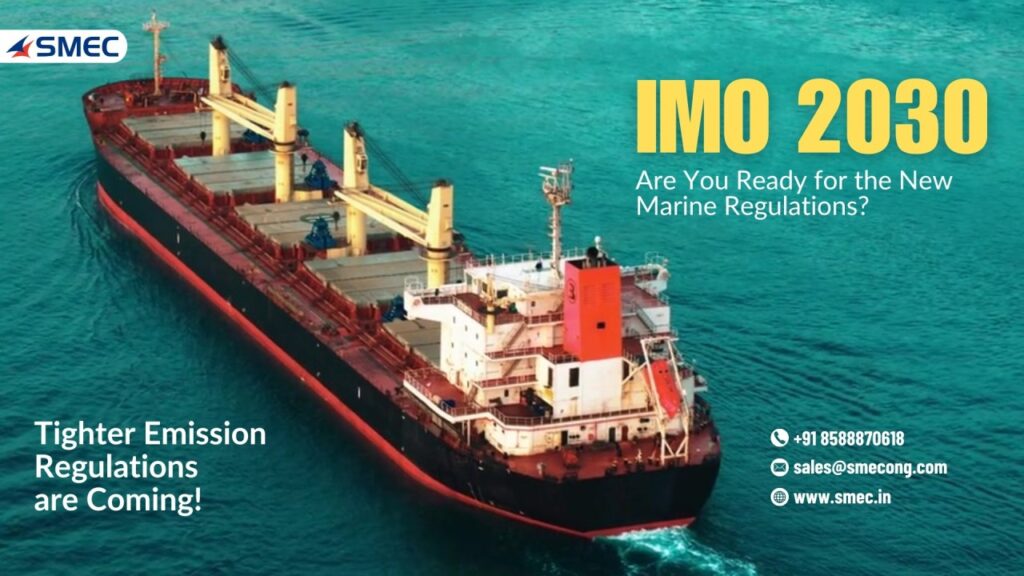IMO 2030: A Mariner's Guide to Charting a Course Towards Sustainable Shipping!

Ahoy there, shipmates! The winds of change are blowing in the maritime world, and they’re carrying us towards a greener horizon. IMO 2030 is more than just a set of regulations; it’s a call to action for the entire industry to reduce our environmental impact and ensure a sustainable future for shipping.
In this article, we’ll break down everything #mariners need to know about IMO 2030, its implications for fleet management, and actionable steps to ensure compliance, efficiency, and competitiveness.
IMO 2030: The Need for Speed
The International Maritime Organization (IMO) has set ambitious targets to slash greenhouse gas emissions from ships. By 2030, we need to:
- Reduce carbon intensity by at least 40% compared to 2008 levels. This means squeezing more nautical miles out of every drop of fuel.
- Be on track for a 50% reduction in total annual GHG emissions by 2050. This requires a long-term vision and a commitment to innovation.
Decoding the IMO 2030 Playbook
- EEXI (Energy Efficiency Existing Ship Index): Think of this as a fitness test for your vessels. It measures their energy efficiency and requires them to meet a certain standard. Older vessels might need retrofits or operational adjustments to comply.
- CII (Carbon Intensity Indicator): This grades your ships operational carbon intensity on a scale of A to E. A good rating means smoother sailing, while a poor one could lead to operational restrictions and impact your reputation.
- Alternative Fuels: The future is cleaner! LNG, biofuels, hydrogen, and even ammonia are gaining traction. Fleet managers need to consider fuel availability, infrastructure, and the potential for retrofitting existing vessels.
The Challenges Ahead (and How to Conquer Them)
- Retrofitting Costs: Upgrading older vessels can be a significant investment.
- Technology Adoption: Keeping up with the latest technologies and integrating them into existing systems can be complex.
- Fuel Availability: The infrastructure for alternative fuels is still developing in many regions.
- Crew Training: We need to equip our crews with the knowledge and skills to operate new technologies and comply with regulations.
ROI : Many shipowners still see IMO 2030 as a cost burden rather than an opportunity.
- Better CII Ratings = Higher Business Opportunities : Ships with high CII ratings will attract higher charter rates & better financing options.
- Fuel Efficiency = Direct Cost Savings : Energy-efficient vessels save up to 15-20% on fuel costs annually.
- Retrofitting & digital upgrades lead to reduced dry-docking & maintenance costs over time.
Turning the Tide: Strategies for Success
But don’t despair, shipmates! With the right strategies, we can not only meet these challenges but also turn them into opportunities:
- Embrace Efficiency: Optimize vessel operations, implement slow steaming, and invest in energy-saving technologies like hull air lubrication and waste heat recovery systems.
- Fuel Flexibility: Explore dual-fuel engines and alternative fuel options to stay ahead of the curve.
- Data is King: Utilize data analytics and IoT to monitor vessel performance, optimize routes, and make informed decisions.
- Invest in R&D: Support the development of new technologies and solutions for sustainable shipping.
- Collaboration is Key: Share best practices and work together to find solutions.
SMEC: Your Ally in the IMO 2030 Journey
Companies like SMEC are playing a crucial role in helping the maritime industry achieve its IMO 2030 goals. We offer a range of solutions, from energy-efficient automation systems to smart IoT-based monitoring and support for bets retrofits.
The Bottom Line
IMO 2030 is a call to action for all of us in the maritime industry. It’s time to embrace innovation, collaborate, and invest in a sustainable future. By working together, we can navigate these challenges and ensure that our industry continues to thrive while protecting the oceans we all depend on.
Happy Reading!
ADDRESS: 2nd FLOOR KALOOR COMPLEX,COCHIN
PHONE NUMBER: +91 70453 55414
EMAIL: support@smec.in
WEBSITE: www.smec.in

